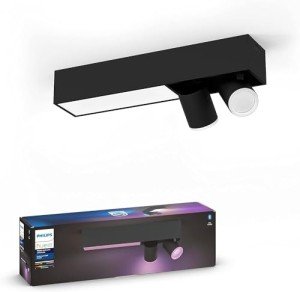A Glimpse At The Secrets Of Contemporary Lighting UK
Contemporary Lighting in the UK: Transforming Spaces with Illumination
Lighting plays an essential role in defining the ambiance and functionality of any area. In the UK, contemporary lighting has emerged as a considerable style aspect, offering innovative services that blend aesthetic appeals with usefulness. This post delves into the numerous designs, materials, and technologies forming contemporary lighting, along with tips for selecting the most suitable fixtures for different settings.
The Evolution of Contemporary Lighting
Contemporary lighting in the UK shows the altering tastes and technological advancements in design. It encapsulates a broad selection of styles, including:
Minimalist: Characterized by simpleness and clean lines, minimalist lighting fixtures concentrate on kind and function without unnecessary embellishments.
Industrial: Inspired by metropolitan settings, industrial lighting combines raw materials like metals and woods with vibrant designs, developing edgy, functional pieces.
Scandinavian: Known for its heat and simpleness, Scandinavian lighting typically features soft colors and natural materials, focusing on creating a cozy atmosphere.
Smart Lighting: This modern trend incorporates innovation with design, enabling users to control their lighting with mobile apps, voice commands, or automation systems.
To highlight the advancement and range in the field of contemporary lighting, think about the table below, which highlights key attributes of different styles.
Style
Secret Characteristics
Popular Materials
Suitable Spaces
Minimalist
Simple, functional designs
Metal, glass, wood
Modern homes, workplaces
Industrial
Raw, incomplete look
Steel, concrete, wood
Lofts, galleries
Scandinavian
Cozy, warm visual appeals
Natural fibers, light wood
Living rooms, coffee shops
Smart
Integrated innovation, automation
Differs extensively
Houses, workplaces, retail areas
Choosing Contemporary Lighting Fixtures
Choosing the ideal lighting fixtures for a space requires careful consideration of several elements. Here are key aspects to remember:
1. Purpose of the Space
Before selecting fixtures, think about the designated use of the area. Various functions require different kinds of lighting:
- Task Lighting: Focused lighting for activities such as reading, cooking, or studying. Examples consist of table lamps and under-cabinet lights.
- Ambient Lighting: General lighting that supplies total illumination. Ceiling lights and pendant fixtures fall under this category.
- Accent Lighting: Designed to highlight specific functions or areas, such as art work or architectural information. Wall sconces and track lighting are typical options.
2. Design and Theme
The lighting needs to match the existing decor. Choose fixtures that match or enhance the general theme of the area, whether it's contemporary, rustic, or diverse.
3. Size and Scale
Think about the percentage of the lighting fixtures relative to the area. A big chandelier might look spectacular above a roomy dining table, while smaller sized pendant easy work well in compact settings.
4. Energy Efficiency
With rising energy costs and environmental concerns, choosing energy-efficient lighting choices is vital. LED lights are an exceptional choice, providing longevity and lower energy usage.
5. Flexibility
In modern style, versatility is key. Fixtures that can be changed or repositioned enhance performance, permitting users to create various environments as needed.
Popular Contemporary Lighting Brands in the UK
The contemporary lighting market in the UK boasts many brands understood for their innovative designs and quality workmanship. Some notable discusses include:
- FLOS: An Italian brand name commemorated for its creative and renowned lights that often double as art pieces.
- Tom Dixon: A British designer recognized for his modern, industrial styles that beautifully incorporate metal and light.
- Anglepoise: Known for its versatile, practical lamps, best for a range of settings from office to imaginative studios.
- John Lewis: Offers a range of contemporary lighting services that deal with a broader audience, including affordable yet stylish choices.
Frequently Asked Questions about Contemporary Lighting in the UK
1. What is contemporary lighting?
Contemporary lighting describes lighting designs and fixtures that reflect current style patterns, typically identified by tidy lines, innovative shapes, and making use of modern materials and technologies.
2. How do I pick the right lighting for my home?
Think about the purpose of the room, existing design, size of fixtures, energy effectiveness, and versatility. Assess how each piece will contribute to the general ambiance and functionality of your space.
3. What are some energy-efficient lighting choices available in the UK?
LED lights are the most popular energy-efficient alternative, understood for their long lifespan and low energy intake. Compact fluorescent lights (CFLs) and halogen bulbs are other options.
4. Where can I purchase contemporary lighting in the UK?
Contemporary lighting can be discovered in numerous retail outlets, both online and in physical stores. Notable merchants include John Lewis, Habitat, and specialized lighting shops.
5. UK Light Shop operate in traditional spaces?
Absolutely! Contemporary lighting can enhance traditional areas when picked attentively. Choosing fixtures with a balance between modern and traditional elements can produce a harmonious design.
Contemporary lighting in the UK represents more than simply illumination; it embodies design innovation and creativity, transforming spaces and boosting functionality. As trends continue to progress, homeowners and designers alike can explore an expansive variety of designs and innovations, ensuring that every room bursts with life, warmth, and character. By considering the important elements outlined in this article, one can curate a collection of lighting fixtures that resonates with personal design and satisfies useful needs, ultimately shaping comfortable and visually attractive environments.
